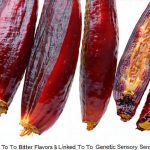Our experience of “acidity” – that sharp, sometimes unpleasant sensation we get from foods and beverages like citrus fruits, vinegar, or even carbonated drinks – is surprisingly complex. It’s rarely a straightforward reflection of the actual acidic content measured by pH. Instead, it’s a fascinating interplay between chemical stimuli, physiological responses, and our individual perceptions, shaped by genetics, prior experiences, and even cultural expectations. We often equate low pH with high perceived acidity, but this isn’t always true; other factors powerfully influence how sour, tart, or acidic something tastes to us. Understanding the disconnect between real acid response (what’s happening chemically) and acidity perception (how we feel it) is key to appreciating the nuances of flavor and developing products that consistently deliver desired sensory experiences.
This divergence stems from the intricate biological mechanisms involved in taste and how our brains interpret signals from the tongue. The sensation isn’t solely determined by hydrogen ions (H+) – the defining characteristic of acidity. Other organic acids, buffering capacity, concentration gradients, temperature, and even the presence of sugars or salts all contribute to the overall perception. A food with a relatively high pH might seem more acidic than one with a lower pH if it contains specific compounds that amplify sourness signals or reduce our ability to detect the acid’s strength. It’s a testament to the brain’s remarkable ability to create a cohesive sensory experience from often-complex and incomplete information, but it also means acidity perception is highly subjective and context-dependent.
The Biology of Acidity: From Tongue to Brain
The initial detection of acids happens primarily through specialized taste receptor cells located in papillae on the tongue. These aren’t simply “acid receptors” as once believed; instead, they are proton sensors – meaning they respond directly to hydrogen ions (H+). However, even this seemingly simple process is more nuanced than it appears. There are two main pathways involved: one involving the OTOP1 protein and another mediated by PKD2L1. OTOP1 detects H+ directly, triggering a signal that travels to the brain. PKD2L1, on the other hand, responds to changes in intracellular calcium caused by acid exposure. These pathways don’t operate in isolation; there’s significant cross-talk between them and other taste modalities like saltiness and bitterness.
The signals from these receptors are then transmitted via cranial nerves (specifically the facial, glossopharyngeal, and vagus nerves) to various brain regions, including the gustatory cortex – responsible for conscious perception of taste – as well as areas involved in emotional processing and reward. This explains why acidity can evoke such strong affective responses; a strongly acidic food might be perceived not just as sour but also as unpleasant or invigorating depending on context and individual preferences. It’s important to remember that the brain doesn’t passively receive information from the tongue; it actively constructs our experience of taste based on prior learning, expectations, and other sensory inputs.
Furthermore, the mouth itself plays a role beyond just housing taste receptors. Saliva, with its buffering capacity, can significantly influence acidity perception. The rate at which saliva mixes with food, its composition (including bicarbonate levels), and even the flow rate all affect how quickly acids are neutralized and how strongly they stimulate taste receptors. This is why eating something acidic might initially seem very sour but then become less so as saliva dilutes the acid concentration.
Factors Influencing Acidity Perception
- Concentration: Higher concentrations of acid generally lead to stronger perceived acidity, but this relationship isn’t linear. Beyond a certain point, increased concentration may not result in a proportionally greater increase in perceived sourness; instead, it might trigger other sensations like burning or astringency.
- Organic Acid Type: Different organic acids (citric, malic, tartaric, lactic, acetic etc.) have varying strengths and elicit different sensory profiles. For example, citric acid is often described as bright and zesty, while acetic acid (vinegar) has a more pungent and penetrating sourness. Each acid also interacts differently with taste receptors and buffering capacity of saliva.
- Buffering Capacity: Foods containing buffering agents like phosphates or proteins can reduce the perceived acidity by neutralizing some of the hydrogen ions. This is why milk, despite its inherent acidity, often feels less sour than lemon juice even if their pH values are similar. Understanding these nuances may require diagnostics that explore acid balance.
Masking and Enhancement Effects
The perception of acidity isn’t static; it’s heavily influenced by other flavors present in a food or beverage. Masking occurs when other tastes (like sweetness) reduce the intensity of perceived acidity. For example, adding sugar to lemon juice significantly diminishes its sourness. Conversely, enhancement can occur when certain compounds amplify acidic sensations. Amino acids like glutamates have been shown to enhance sour taste perception, contributing to the complex flavors found in fermented foods or aged cheeses.
Temperature also plays a significant role. Cold temperatures generally suppress acidity perception, while warmer temperatures tend to accentuate it. This is why cold juice might be easier to drink than warm juice even if they have the same pH. The interplay between these various factors highlights the complexity of acidity perception and underscores the challenges in predicting how consumers will experience the sourness of a product based solely on its pH value. If you find that your response to food changes, consider evaluating gut response.
Individual Variability & Cultural Differences
Genetic predispositions play a surprisingly large role in taste sensitivity, including sensitivity to acids. Some individuals are “supertasters” – possessing more taste buds than average and exhibiting heightened sensory perception across all modalities, including acidity. Others are less sensitive, requiring higher concentrations of acid to experience the same level of sourness. These differences aren’t just biological; they’re also shaped by cultural factors and early life experiences.
Cultures with a history of consuming highly acidic foods (like those in Southeast Asia) often demonstrate greater tolerance for sourness than cultures where acidity is less prevalent. This suggests that repeated exposure to acidic flavors can desensitize taste receptors over time, leading to a higher threshold for perceived acidity. Furthermore, learned associations between acidity and positive or negative experiences can influence preferences; if someone associates sourness with unpleasant memories, they may be more likely to dislike acidic foods. Testing tools for rare gut syndromes can help identify sensitivities.
Ultimately, understanding the intricate relationship between real acid response and acidity perception is crucial not just for food scientists and product developers but also for anyone interested in appreciating the art and science of flavor. It’s a reminder that taste isn’t simply an objective measurement but a deeply personal and subjective experience shaped by biology, culture, and individual preferences. A change in digestive response can also play a role. Sometimes, even the smell of food triggers an acid response. Understanding how your body responds to acidity may require you to test for stomach acid. And remember, after holiday eating, your digestive system may need time to recover.


















